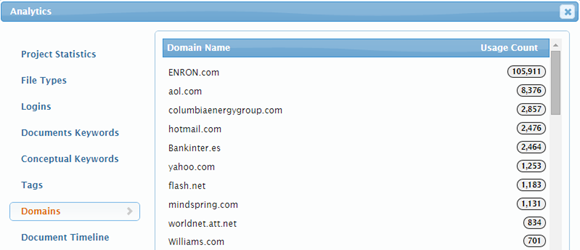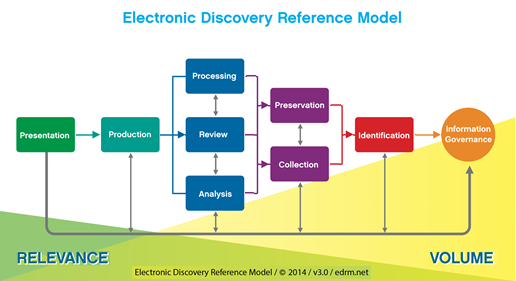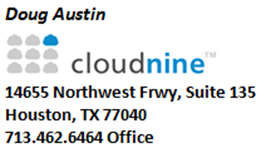This is the first of the 2015 LegalTech New York (LTNY) Thought Leader Interview series. eDiscovery Daily interviewed several thought leaders at LTNY this year and generally asked each of them the following questions:
- What are your general observations about LTNY this year and how it fits into emerging trends? Do you think American Lawyer Media (ALM) should consider moving LTNY to a different time of year to minimize travel disruptions due to weather?
- After our discussion last year regarding the new amendments to discovery provisions of the Federal Rules of Civil Procedure, additional changes were made to Rule 37(e). Do you see those changes as being positive and do you see the new amendments passing through Congress this year?
- Last year, most thought leaders agreed that, despite numerous resources in the industry, most attorneys still don’t know a lot about eDiscovery. Do you think anything has been done in the past year to improve the situation?
- What are you working on that you’d like our readers to know about?
Today’s thought leader is Brad Jenkins of CloudNine™. Brad has over 20 years of experience as an entrepreneur, as well as 15 years leading customer focused companies in the litigation support arena. Brad has authored several articles on document management and litigation support issues, and has appeared as a speaker before national audiences on document management practices and solutions. He’s also my boss! 🙂
What are your general observations about LTNY this year and how it fits into emerging trends? Do you think American Lawyer Media (ALM) should consider moving LTNY to a different time of year to minimize travel disruptions due to weather?
LTNY seemed reasonably well attended this year and I think it was a good show. I have noticed a drop in the number of listed exhibitors though, from 225 a couple of years ago to 199 this year. Not sure if that’s a reflection of consolidation in the industry or providers simply choosing to market to prospects in other ways. I guess we’ll see. Nonetheless, I thought there were several good sessions, especially the three judges’ sessions that addressed key cases, the rules changes and general problems with discovery. I liked the fact that those were free and available to all attendees, not just paid ones. Not surprisingly, those sessions were very well attended.
Overall, I thought the primary focus of this show’s curriculum in three areas: information governance (which had its own educational track at the show), cybersecurity and data privacy. With the amazing pace at which Big Data is growing, I expect information governance to be a major topic for some time to come, especially with regard to the use of technology to manage growing data volumes. And, as we discussed in this blog a couple of weeks ago, data breaches continue to be on the rise and we’ve already had a major one involving over 80 million records this year. That’s also going to continue to be a major focus.
One issue at the show that I think affected several attendees was the sudden lack of meeting space. The Hilton got rid of its lobby lounge, replacing it with a smaller executive lounge limited to hotel guests. And, ALM booked up the Bridges Bar for private events throughout the show. Meetings and discussions are a big part of LTNY and I hope ALM will take that into account next year and at least make the Bridges Bar available for meetings.
As for whether ALM should consider moving LTNY to a different time of year, there are pros and cons to that. As a person who missed the show entirely last year due to weather and travel issues and was delayed a few hours this year, it would be nice to minimize the chance of weather delays. On the other hand, I suspect that part of the reason that the show is in the winter is that it’s less costly to host then. Certainly, vendors would need an advanced heads up of at least a year if ALM were to decide to move the show to a different time of year. I don’t expect that to happen, despite the recent travel issues for remote attendees.
After our discussion last year regarding the new amendments to discovery provisions of the Federal Rules of Civil Procedure, additional changes were made to Rule 37(e). Do you see those changes as being positive and do you see the new amendments passing through Congress this year?
I’m not an attorney and am no expert on the rules, but, based on everything that I’ve heard, it sounds as though they should pass. I know that large organizations are counting on Rule 37(e) to reduce their preservation burden. I think whether it will or not will depend on judges’ interpretation of Rule 37(e)(2) (which enables more severe sanctions “only upon finding that the party acted with the intent to deprive another party of the information’s use”). That section may result in lesser sanctions in at least some cases, but we’ll see. At eDiscovery Daily, we’ve covered over 60 cases per year each of the past three years, so at some point in a year or two, it will be interesting to look back at trends and what they show.
Last year, most thought leaders agreed that, despite numerous resources in the industry, most attorneys still don’t know a lot about eDiscovery. Do you think anything has been done in the past year to improve the situation?
I think it’s still a battle. We continue to work with a lot of firms whose attorneys lack basic eDiscovery fundamentals and we continue to provide education through this blog and consulting to attorneys to assist them with technical language in requests for production to ensure that they receive the most useful form of production to them, native files with included metadata. I think it’s imperative for providers like us to continue to do what we can to simplify the discovery process for our clients – through education and through streamlining of processes and process improvement. That’s what our corporate mission is and it continues to be a major focus for CloudNine.
What are you working on that you’d like our readers to know about?
Well, speaking of has “anything been done in the past year to improve the situation”, in November, we released CloudNine’s new easy-to-use Discovery Client application to automate the processing and uploading of raw native data into our CloudNine platform. Many of our clients have struggled with having data dumped on their desk at 4:00 on a Friday afternoon and having to fill out forms, swap emails and play phone tag with vendors to get the data up quickly so that they can review it over the weekend. With CloudNine’s Discovery Client, they can get data processed and loaded themselves without having to contact a vendor, whether it is load ready or not.
The application will extract data from archives such as ZIP and PST files, extract metadata, extract and index text (and OCR documents without text) render native files to HTML and identify duplicates based on MD5HASH value. The application will also generate key data assessment analytics such as domain categorization to enable attorneys to develop an understanding of their data more quickly. And, we are just about to release a new version of the Discovery Client that will enable clients to simply process the data and retrieve the processed data to load into their own preferred platform (if it’s not CloudNine), so we can support you even if you use a different review platform.
Our do-It-yourself features such as loading your own data, adding your own users and fields, accessing audit logs and setting user rights gives our clients unique control of their review process and makes it easier for them to understand eDiscovery and feel in control of the process. Simplifying discovery and taking the worry out of it (as much as possible) is what CloudNine is all about.
Thanks, Brad, for participating in the interview!
And to the readers, as always, please share any comments you might have or if you’d like to know more about a particular topic!
Disclaimer: The views represented herein are exclusively the views of the author, and do not necessarily represent the views held by CloudNine. eDiscovery Daily is made available by CloudNine solely for educational purposes to provide general information about general eDiscovery principles and not to provide specific legal advice applicable to any particular circumstance. eDiscoveryDaily should not be used as a substitute for competent legal advice from a lawyer you have retained and who has agreed to represent you.










